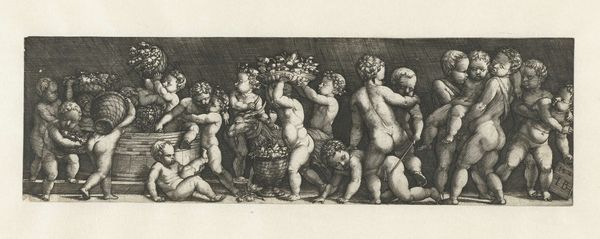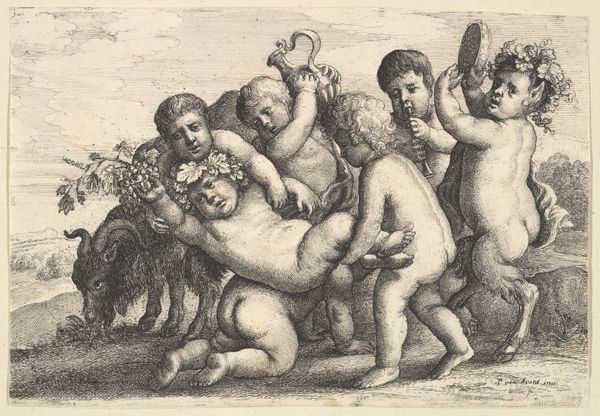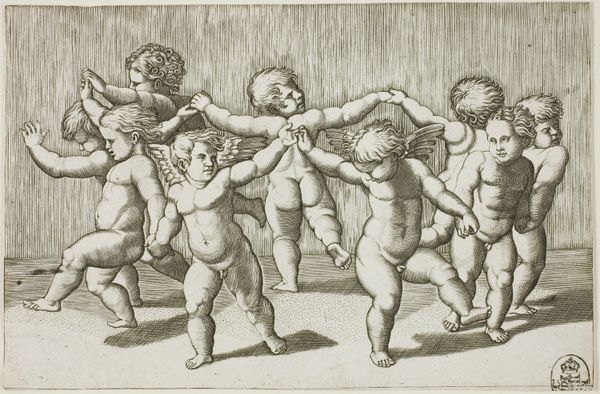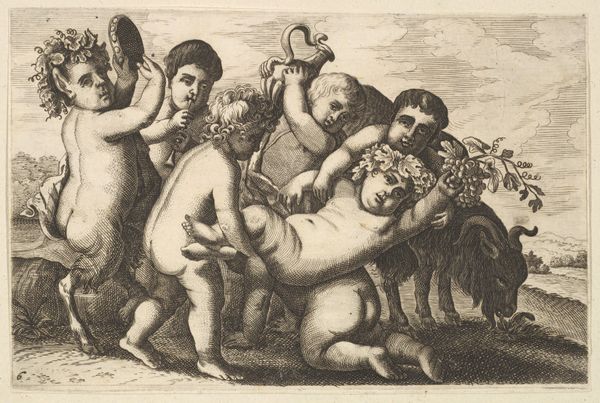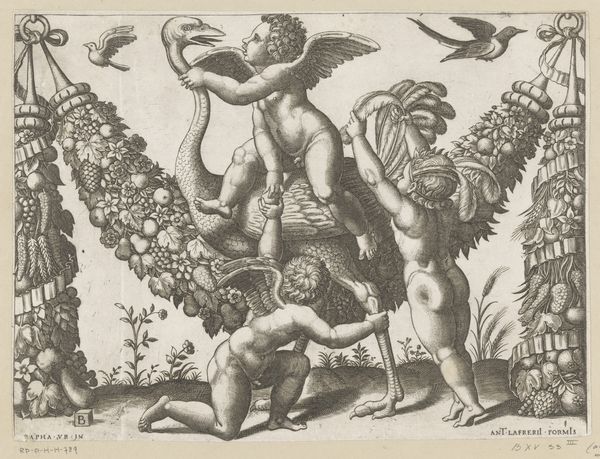
drawing, print, paper, engraving
#
drawing
# print
#
figuration
#
paper
#
genre-painting
#
history-painting
#
italian-renaissance
#
engraving
Dimensions: 89 × 292 (plate/sheet)
Copyright: Public Domain
Editor: This is "Children Gathering Grapes," an engraving by Master I.B., made in 1529. There's a lot of frenetic energy here; a whole mess of children carrying fruit and clambering over each other. What sort of stories do you think an image like this tries to tell? Curator: It’s a scene overflowing with bacchanalian energy, isn’t it? Note how the abundance of grapes evokes themes of fertility, joy, and even intoxication, drawing upon classical imagery associated with Bacchus, the god of wine. What strikes me is how the artist has chosen to depict children—their innocence, their unrestrained energy—participating in what are essentially adult rituals of harvest and celebration. Do you see any tensions in that juxtaposition? Editor: I think so. There's definitely a contrast there between childhood innocence and these symbolic associations with the adult world. I suppose the grapes become more than just fruit. Curator: Exactly! They’re symbols weighted with cultural memory. This image may remind viewers of the fleeting nature of life and the importance of reveling in the present moment. It’s about cultural continuity. Consider how Renaissance art often used classical motifs to explore contemporary concerns. Do you think that holds true here? Editor: Absolutely, because there is something universal here... It makes one think about how cultures evolve by layering interpretations on top of inherited ideas and imagery. That blending feels key. Curator: Precisely. Through these cherubic figures, Master I.B. taps into something eternal, something that resonates across centuries. The visual vocabulary, handed down, reworked, made anew. It seems innocent on its surface, but… Editor: Yes, those layers definitely change the reading. This was truly enlightening, highlighting the significance of enduring imagery within distinct eras.
Comments
No comments
Be the first to comment and join the conversation on the ultimate creative platform.
